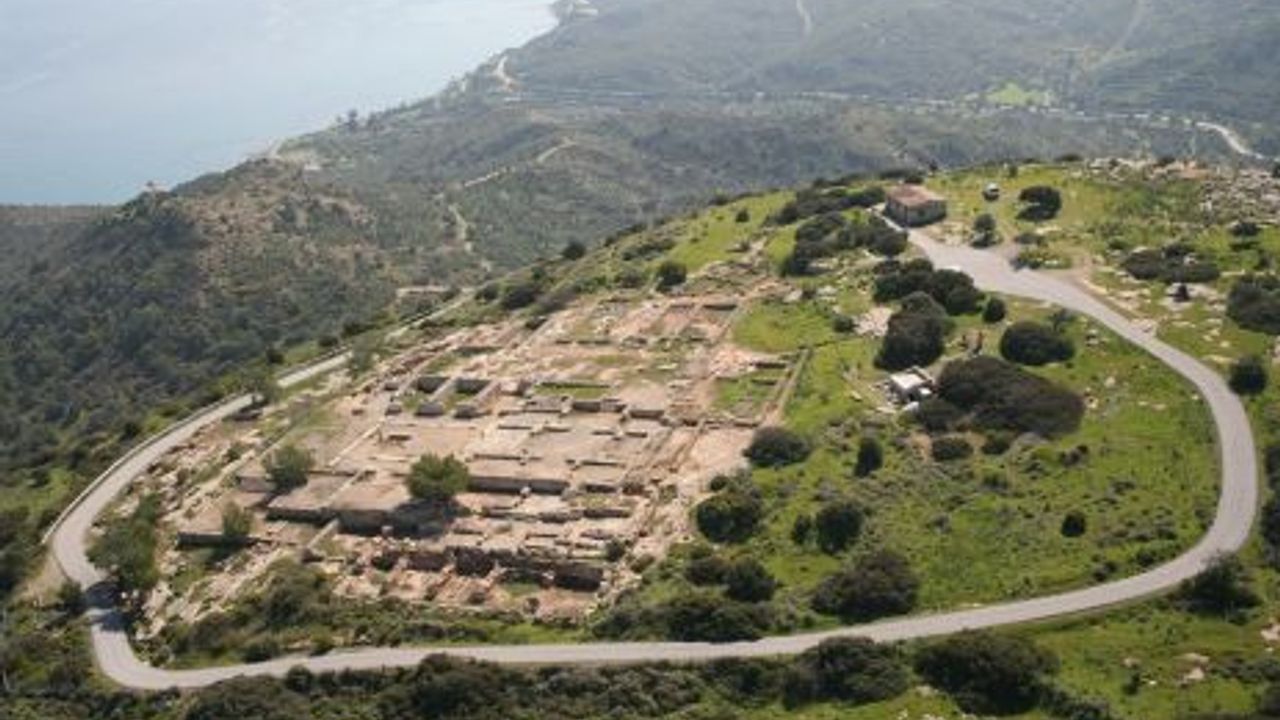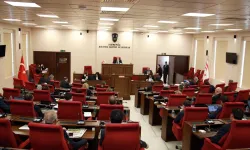Hasan Karlıtaş
Without dispute, the Vouni Palace tops the list of places that best answer your yearning for inner peace. The palace, which occupies a privileged place in Cyprus, has a beauty difficult to describe through its mysterious history and unrivalled view of mountains and seas. It is at the forefront of places where history and nature meet.
Its story begins with the Persian-friendly king Doxandros, king of Marion, situated closed to the present-day town of Polis in northwestern Cyprus. He wanted to found a city that would keep the rival town of Soli under control and thus built established the Vouni Palace on a hill some 267 metres above sea level in an area known today as Bademliköy (Loutros). The palace is one example of ancient architecture in Cyprus and the single known example of Persian architecture there.
The palace, which has two floors in places and is constructed across three terraces, boasts a total of 137 rooms. It takes its name from “Vouno”, the Greek word for high peak, which through time came to be pronounced as “Vouni” as a name for the area. But this was not actually a palace: it is remembered as such because of the rich treasures that were found here. They included silver jewellery, many coins, a bronze bull and finely crafted statues.
Swedish archaeologists conducting digs between 1927 and 1931 were among the first to cast a light on Cyprus’s past. Its systematic work in the Vouni Palace was particularly important to the team, particularly as it was conducted in the view of the Petra Tou Limnidi island, which is one of the places were the flame of civilisation was first lit on Cyprus. Chief archaeologist Einer Gjerstad described the digs at Vouni Palace and Petra Tou Limnidi as the “Awakening of the Island”.
The only Persian work in the Eastern Mediterranean
The Vouni Palace is the only example of Persian architecture not only in Cyprus but in the Eastern Mediterranean. The seven steps, each 16 metres in breadth, in the palace’s main square are the widest of their kind in all of Cyprus.
The palace’s courtyard was made of columns connected to one another. There was a well directly in the centre of this courtyard, which provided the palace’s water needs. Rainwater would be collected here for use in the summer months.
Another feature of the Vouni Palace courtyard was that it connected to every room in the palace. Particularly noticeable are the column heads, made of limestone, that depict the face of the ancient Egyptian goddess Hator. Sadly, owing to natural erosion, Hator’s facial features have not made it prominently to the present day.
Another important work is the Vouni hamam, the oldest hamam in Cyprus and a window into our understanding of the hygienic practices of people at that time.
Temple of Athena
Another important segment of Vouni is the temple devoted to Athena. Constructed on a rocky area, the temple is two storeys tall in places and was built to contain two main entrances. It combines architectural techniques from both the Persian and Greek traditions and contains a statue of Athena, goddess of wisdom.
Destroyed by the people of Soli
The palace itself stood for nearly a century, but was damaged beyond use after being attacked by the people of neighbouring Soli, who saw it as a threat. Although it yielded many treasures in later years, the Palace of Vouni was never used again.
Palace of orchids
The Palace of Vouni is particularly beautiful between the months of January and May, when a rich array of orchids and other rare flowers bloom and adorn in the area into colour. With the sea on one side, the mountain on the other and the meeting of history and nature in between, it is an unrivalled picture of nature’s beauty.
Vouni Palace is without doubt the answer to your internal call for peace.
There is no need for many words. Vouni Palace equals peace. Come, see, discover!



